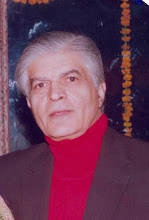
The Human Body
RESPIRATORY SYSTEM Part II
The CO2 / O2 exchange company
The bellow that keeps the internal flames alive
YOU BREATHE ALL THE TIME Non stop fire bellows
The breathing mechanism is automatic even when you started reading this section you may have to take a dozen breaths without knowing it.
You keep on breathing even when you are asleep or when you are unconscious.
ACT ONE
Each breath involves taking in air (inhale) and the putting out air (exhale).
This occurs 15 times a minute.
In 24 hours this works out to about 20,000 times.
In quiet breathing (normal) you take in about 500 cc of air, and give out the same amount.
To meet the oxygen requirement after exercise you can take in unto 4500 cc of air and bring out the same amount.
The large quantity of air can be taken in when required, because the lungs are very soft, spongy and very elastic.
Your lungs have no muscles but the muscle of chest wall (intercostals muscle) and your diaphragm does most of the work to take in this extra amount of air.
ACT TWO
Air inhaled contains 21% of oxygen while the exhaled air has about 16%, some oxygen having been exchanged and used by the cells...
The intercostals muscle stretch from your back bone to the front of your rib cage.
Intercostals muscle expand the rib cage to enlarge the chest cavity outwards.
You can see this when you take a deep breath.
The diaphragm contracts and lowers the floor of the chest.
In quiet breathing this may be only a centimeter but during exercise this downward movement may be 6 to 7 cm.
Both these movement expand the chest and suck air into the lungs through the upper and lower respiratory passages.
THE UPPER AIR PASSAGE The airway ducts and humidifier
ACT THREE
The nose and the throat (pharynx) provide entry for air.
The air is warmed and moisture added by the mucosa of these passages.
The hair in your nose also filters the dust particles in the air taken in.
In your nose and throat mucosa lining secretes sticky mucus which traps small particles.
Tiny hair like cilia push these particle towards the mouth and nose to be coughed out or swallowed.
LOWER RESPIRATORY PASSAGES The rigid duct and voice box
FINAL ACT
The trachea is a single hollow tube and starts at the lower end of the voice box (Larynx). It is 12 cm long (5 inches) and has cartilage in it is wall (You can feel this with your fingers).
This cartilage prevents this tube from collapsing.
In the chest the trachea divides into the right and the left bronchi.
Further divisions of right and left bronchi occur within the lungs so that smaller branches reach all parts of the lungs.
The mucosa of the respiratory passages is lined with cells which have small hair like projections (cilia).
The cilia by their movement prevent dust particles and large bacteria from entering the lungs. These Celia also move the particles towards the upper air passage to be coughed out.
The smallest bronchioles end in a sac like cavity which is the alveoli
This single cell lined sac with blood vessels lying close to the air sac.
It is here that the gas exchange occurs.
Any question should be address to: drmmkapur@gmail.com you will receive further information regarding your question.
All posts are stored in archives for your access and review





No comments:
Post a Comment